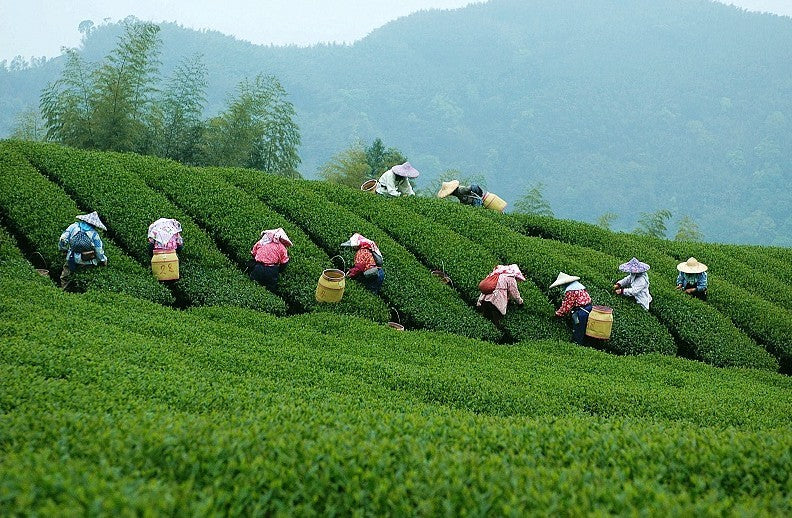
The Art and Science of Tea Processing
Deel
The journey from freshly picked tea leaves to the dried leaves in your cup involves intricate processing methods. Each step plays a crucial role in defining the tea's character, flavor, and quality.
1. Withering: After harvesting, tea leaves are spread out to wither, reducing moisture content and preparing them for further processing. This step enhances the leaves' pliability and initiates the development of flavor compounds.
2. Rolling: Withered leaves are rolled to break the cell walls, releasing essential oils and enzymes. This process influences the tea's taste and aroma, with variations in rolling techniques contributing to different tea types.
3. Oxidation: Oxidation occurs when the rolled leaves are exposed to air, leading to chemical reactions that darken the leaves and deepen flavors. Controlling the duration and conditions of oxidation is vital in producing various teas, from green to black.
4. Firing (Drying): To halt oxidation and preserve the desired characteristics, leaves are heated through methods like pan-firing or baking. This step stabilizes the tea, ensuring it retains its flavor and extends shelf life.
Mastering the art and science of tea processing allows producers to craft a diverse array of teas, each with unique profiles. For consumers, appreciating these processes enriches the overall tea experience.
Taste our Blossom Hand-Painted Tea Canister with Premium Tea. Not only does it preserve the tea’s delicate flavors, but it also serves as a stunning piece of art, making it an ideal gift for tea lovers!
